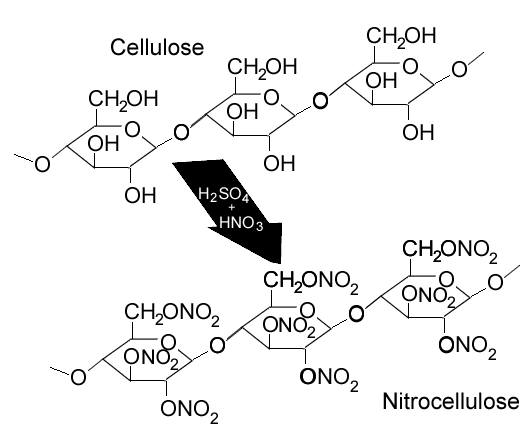Science of Conflict
Guncotton

In cellulose, three OH groups are present in each six carbon ring unit. During the nitration process, all three hydroxyl groups (OH) groups are nitrated to form ONO2 groups. The percentage of oxygen in the compound is now very high at 39% and is placed deep inside the molecular structure of cellulose. This increases the rate of burning significantly when compared to normal cellulose.
Click
to see a 1Mb video of nitrocellulose.
Click to see a 500 Kb video of normal cellulose
burning.
This new compound called trinitrocellulose or guncotton was to make a significant contribution to the artillery battles of the 1800s and was the predecessor to more powerful explosives, such as nitroglycerine.
Gun cotton was discovered by Swiss chemists in 1846, when they combined cotton wool, sulfuric acid and nitric acid. This mixture produced an explosive which was three times more powerful than conventional gunpowder and created less smoke and flame. This was a tremendous breakthrough for, up to then, the use of conventional gunpowder tended to produce smoke that obscured the gunner's vision.
